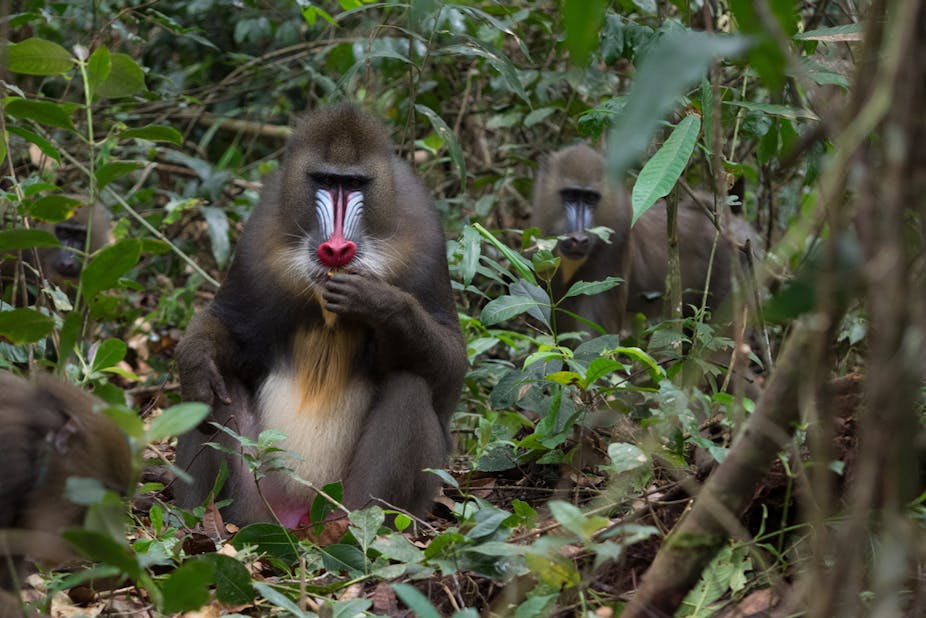Monitoring mammal species is a crucial conservation tool. This is particularly true in ecological transition zones – geographical areas in which different habitats, like grassland and forest, meet and merge into one another.
These zones are frequent hotspots of mammal species diversity because they do not only contain species typical for specific habitat types, but often also additional highly adaptable species. But in zones of ecological transition animals can find themselves at the edge of the habitat type most suitable to them. The result is that there are often fewer of them and they have reduced genetic variability. This makes them less resilient than core populations.

As such, with ever increasing levels of human encroachment and poaching, these zones need special attention by conservationists to guarantee the survival of populations inhabiting in these.
A good example is the stunning, but largely overlooked, Batéké Plateau National Park in southeastern Gabon. In 2015, a systematic camera trap based monitoring programme was started by The Aspinall Foundation and the Gabonese National Parks Agency. Since 1998 they have worked together to facilitate the reintroduction of the western lowland gorilla in the national park. Data were collected in collaboration with Panthera, an international NGO dedicated to the conservation of the world’s wild cats and the Pan African Program of the Max Planck Institute for Evolutionary Anthropology, which conducted a survey investigating the behaviour of chimpanzees in the park.
The park is situated at the transition between the Gabonese rain forest and the savannah-dominated Batéké Plateau of the Republic of the Congo. It provides breathtaking views of narrow stretches of forest along the banks of the Mpassa River (so called gallery forests) meandering into the savannah. The park once teamed with wildlife. But the bushmeat and illegal ivory trade along with organised eradication of large carnivores had taken its toll on the mammal species in the area.
Those that remained appeared to be restricted to the gallery forests. Some were thought to be close to extinction. For example, for decades it was assumed that mammals like lion were extinct in the park. But the results from the camera trap monitoring project give reason for hope that wildlife is returning to the park. And captured footage provides intriguing insights into the Batéké mammal species community.
Astonishing findings
The monitoring programme found 12 mammal species that are threatened with extinction according to the International Union for Conservation of Nature.. These include chimpanzee, leopard, elephant, giant pangolin and western lowland gorilla, which were reintroduced to the park since 1998.
Notably, the camera traps captured species thought to be long extinct or even not occurring in the area. For example, camera footage in 2015 marked the first definitive proof of lion in Gabon. Until then the assumption had been that the last specimen was shot in 1996. Potential paw prints were spotted in 2004. Non-invasive efforts were made to collect hair samples. Genetic analysis showed that this single male lion might be a survivor of the historic Batéké lion population.
Another example involves footage of several young mandrills. This suggests that emigrating males of this species may venture out further than previously thought in search for new groups and females. According to the International Union for Conservation of Nature, the distribution of mandrills in Gabon is restricted to the east by the Ivindo and Ogoue Rivers. Combined with interviews with local people, which reported that mandrills were once present in the north of the park, current observations suggest that the current species distribution must be redefined.
More recently, another spectacular discovery took place in 2017. Camera traps captured a spotted hyena in Batéké for the first time in two decades.
These astonishing findings illustrate that large mammals are returning to the Batéké Plateau National Park after two decades of conservation efforts, initiated by The Aspinall Foundation’s gorilla reintroduction programme. Today, Batéké appears to be the only park within the network of protected areas in Gabon where the savannah-dwelling serval, jackal and bush duiker exist together. It’s also the only park with four species of wild cats. The national park is also rare because it holds large carnivores like lion and spotted hyena. But illegal hunting remains a threat, particularly in the southeast of the park.
Intriguingly, the findings also showed that the species diversity wasn’t as great as might have been expected. With 36 medium to large sized mammal species, the park appears to host a smaller number of species than the forested protected areas of Gabon and Congo. To investigate this, researchers took a closer look at the mammal species in the gallery forests.
As the gallery forests reach out into the savannah, they may degrade and become less suitable for species that are highly adapted to living in a forest habitat. But the researchers did not find a smaller number of species in the gallery forests further in the savannah compared to those closer to the continuous Gabonese rain forest.
However, it may be possible that the narrow gallery forests are simply too small to provide sufficient forage to support certain species. This might explain the striking absence of mangabey and colobine primate species, which are characteristic for the African rain forest. Future studies will need to take into account factors like altitude, climate and soil composition influencing plant productivity and food availability, to understand the local variation in species richness.
In the meantime, it’s crucial that the Batéké Plateau National Park is rigorously protected to guarantee the continued survival and recovery of the fragile community of mammals.
This article was co-authored by Tony King of The Aspinall Foundation.

